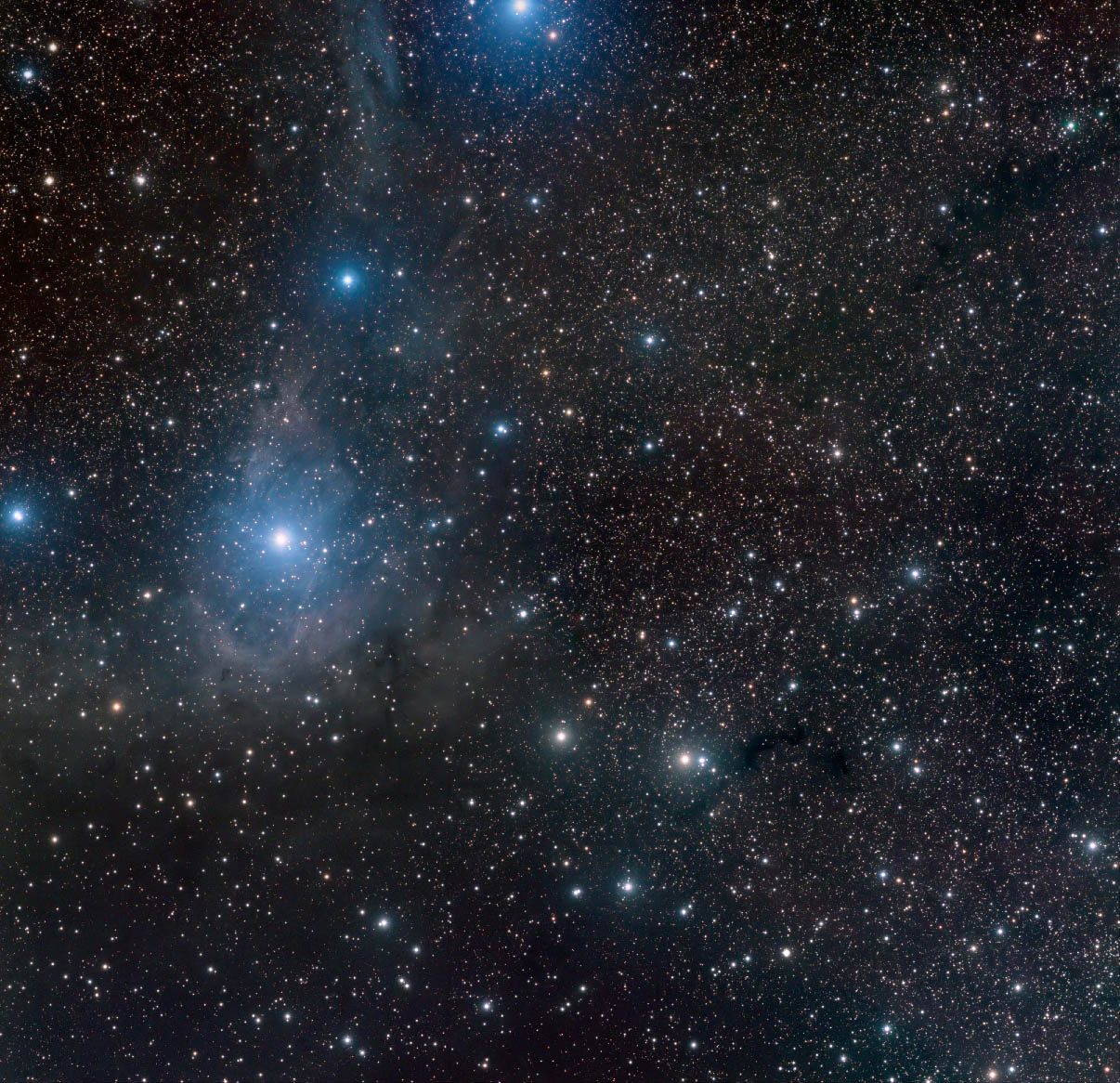Vdb15
Commentaires sur l’objet photographié
 Je vous présente une nébuleuse en réflexion nommée Vdb15, pas facile car placée au nord et donc la L reste difficile à gérer à cause de la pollution lumineuse. La grosse difficulté a été l’humidité et les étoiles en ont souffert un peu.
Je vous présente une nébuleuse en réflexion nommée Vdb15, pas facile car placée au nord et donc la L reste difficile à gérer à cause de la pollution lumineuse. La grosse difficulté a été l’humidité et les étoiles en ont souffert un peu.
Données techniques
Données techniques de prise de vue
Date : image du 17/18/19/23/24 octobre 2014
Optics :Tec140 F7
Mount : Paramount ME Numéro 2
Location : Orange observatory
Seeing : 3,5 à 5 !
Ccd : Proline 16803
filter wheel :FLI
filters : Astrodon LRGB
Focuser :Robofocus
Guiding : Atik 314L+
Temp. out : +10
Temp ccd : -35°
Total exposure :14h00
L 66 x 10 mn B1x1
R : 12 x 5mn b2x2
G : 12x 5mn b2x2
B : 12 x 5mn b2x2
Données scientifiques
| Observation data Epoch J2000 Equinox J2000 |
|
|---|---|
| Constellation | Camelopardalis |
| Right ascension | 03h 29m 54.74413s[1] |
| Declination | +58° 52′ 43.4995″[1] |
| Apparent magnitude (V) | 4.54[2] |
| Characteristics | |
| Spectral type | A0 Iae[2] |
| U−B color index | −0.11[3] |
| B−V color index | +0.56[3] |
| Variable type | α Cyg[4] |
| Astrometry | |
| Radial velocity (Rv) | −6.20[5] km/s |
| Proper motion (μ) | RA: 1.79[1] mas/yr Dec.: −1.09[1] mas/yr |
| Parallax (π) | 1.30 ± 0.56[1] mas |
| Distance | 975[3] pc |
| Absolute magnitude (MV) | −7.20[3] |
| Details[2] | |
| Mass | 19.3 M☉ |
| Radius | 97 R☉ |
| Luminosity | 55,000 L☉ |
| Surface gravity (log g) | 1.75 cgs |
| Temperature | 9,730 K |
| Rotation | 25 |
| Age | 11[3] Myr |
| Other designations | |
Since 1943, the spectrum of CE Cam has served as one of the stable anchor points by which other stars are classified.[6]
CE Camelopardalis is some 19 times as massive as the Sun and 55,000 timers as luminous. Hohle and colleagues, using the parallax, extinction and analysis of spectrum, came up with a mass 14.95 ± 0.41 times that and luminosity 62,679 times that of the Sun.[7]
CE Cam is embedded in a large dusty molecular cloud, part of which it illuminates as a reflection nebula (vdB15 or BFS 29). This is a region of ongoing star formation with stars aged from one to a hundred million years old. CE Cam itself is thought to be around 11 million years old, long enough to have exhausted its core hydrogen and evolved away from the main sequence into a supergiant

